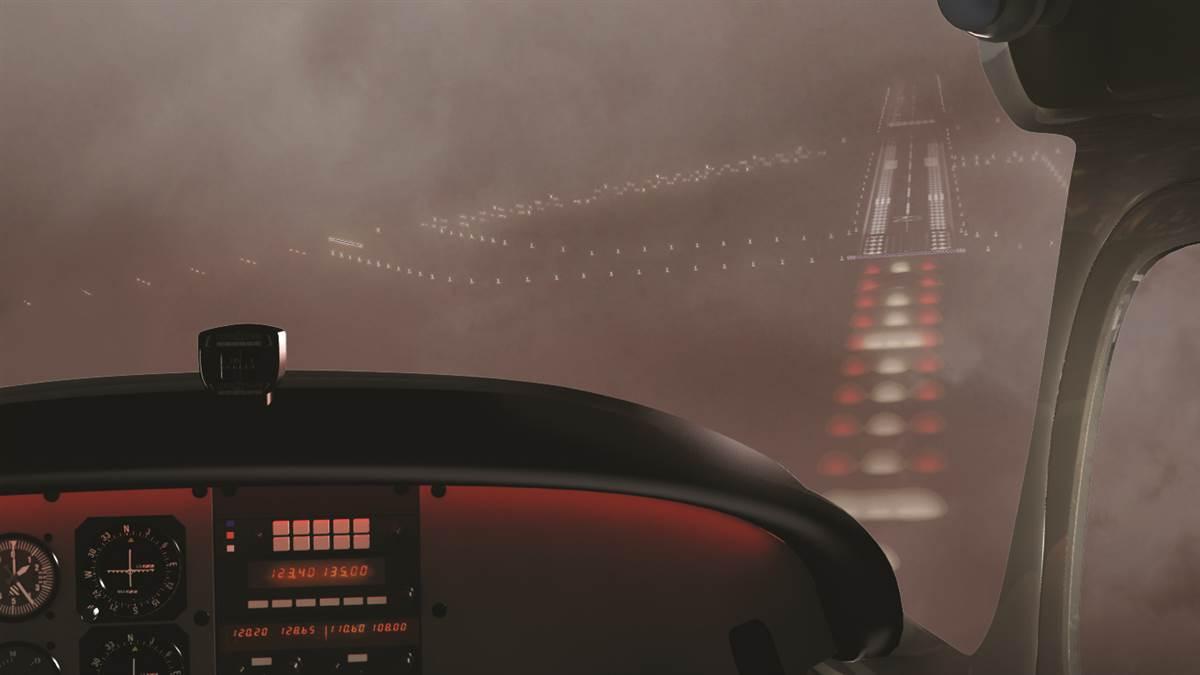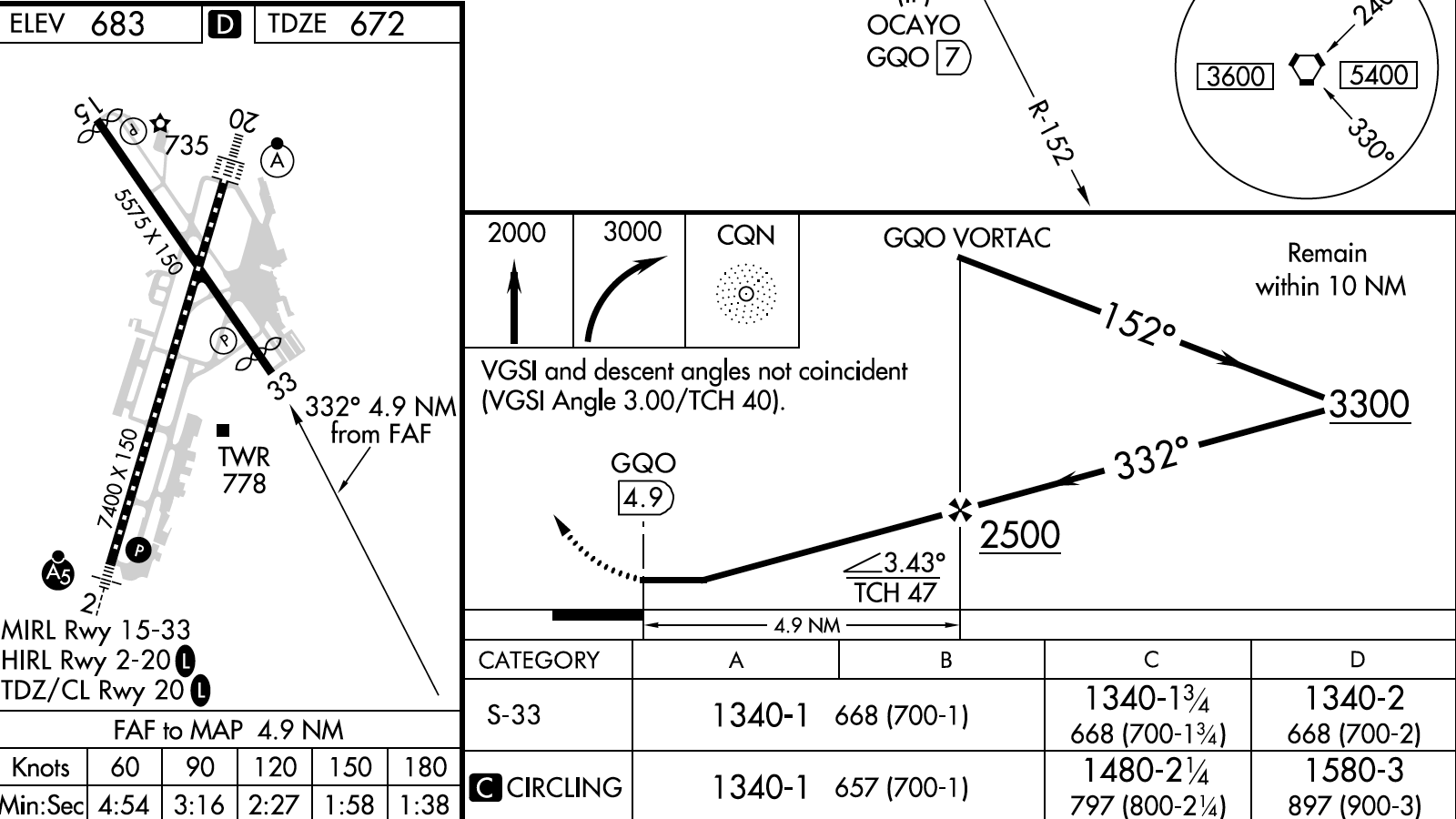Low-IMC alerts
Anticipating challenges on final

When ceilings and visibilities are well above minimums, there’s often enough altitude and time to allow a larger margin of error. That’s not often the case when you’re on the final approach course, close to the ground, and still in clouds.
Not anticipating the effects of a crab is one such problem. You may have listened to the ATIS, ASOS, or AWOS back at the initial approach fix—and even copied it down—so you know the wind direction and the approach runway in use. You know if a crosswind component is a factor, so you’re mentally prepared for a crosswind landing technique. On the trip down the final approach course you make the proper heading corrections to keep on track, adjusting for any crosswind effects.
But when you break out of the clouds, spotting the runway may be a challenge. Depending on your crosswind correction angle, the nose of the airplane may be pointing well away from the airport. You’re still on course, but need to look around to find the runway, then maneuver in preparation for landing. And at this low altitude, it isn’t exactly the best time to make steep banks. Especially if you hadn’t mentally prepared for it. That goes double if you’re flying at night. The runway lights may be far from the view straight ahead. Crabbing and slipping prior to touchdown is common in crosswind VFR operations. Coming out of a big crab angle on a long final in IMC is another matter.

Forgetting to time your approaches can bring other surprises in low instrument meteorological conditions. Sure, precision approaches have missed approach points defined by published decision heights or decision altitudes, and most approaches supplemented with DME information post their minimums augmented with DME distances. But ILS and many nonprecision approaches are published with elapsed times from their final approach fixes to their missed approach points. The times are based on the airplane’s groundspeed, and on many nonprecision approaches (those without vertical guidance) it’s the elapsed time that dictates the missed approach point. Forget to start timing at the final approach fix—and adjust the time for wind effects—and on many nonprecision approaches you won’t know when to execute a missed approach.
Speaking of time, it’s equally important to keep track of your flight time. You calculated an estimated time en route (ETE) on your flight plan, and ATC will rely on that in the event communications are lost. Should that happen, any expect further clearance (EFC) times will depend on your estimated time of arrival (ETA) at your destination airport, which is based on your flight-planned ETE. Absent an EFC time, if your last clearance limit was an approach fix, you’d leave it at your ETA. If the last clearance limit you received wasn’t to an approach fix and you lost communications, then the regulations say to fly to one and then begin your descent and approach at your ETA. Meanwhile, ATC is keeping other traffic at bay while you proceed to the airport. For complete missed approach procedure details, consult FAR 91.185(c).
And all of this depends on the ETE you filed. That means starting the clock at takeoff and monitoring your ETE as you fly. Did you ever forget this step? I’m betting it’s pretty common, so let’s hope you can avoid all this by landing in VMC weather before an instrument approach is even necessary.
Stabilized approaches are vital when shooting instrument approaches in low IMC. That means keeping a constant airspeed, descent angle, and descent rate as you fly down the final approach course. It also means keeping any course deviation and glide slope indicators centered, or within one dot’s worth of deflection. Obviously, ILS and RNAV GPS approaches with precision guidance are a great help here. Below 1,000 feet above the decision height/decision altitude/minimum descent altitude, staying as rock-steady as possible is one of the keys to any safe instrument approach. You want to be fully configured at the final approach fix, meaning gear and flaps down, power set for your target approach speed—and landing checklist complete. This leaves you free to fly the course with minimal changes in pitch, pitch trim, bank, and power.
Some lightplane pilots discount the stabilized approach concept, believing that any airspeed or descent-rate excursions can be easily corrected, given relatively slow airspeeds and descent rates. Piston singles may approach at 90 knots and descend at 500 to 600 fpm, some pilots may say, giving plenty of time to do “dive and drive” descent profiles on nonprecision approaches, or wait until short final to extend full flaps. Truly stabilized approaches, goes the argument, are for jets and turboprops that fly down final at 120-plus knots and 1,000 fpm, which can take less than two minutes to touchdown.
But fast or slow, heavy or light, making big configuration changes can lead to trouble. At the least, the airplane may go off-profile. At worst, course deviation indicator and glideslope needles may peg, forcing a missed approach. Extending full flaps on short final can cause ballooning or high sink rates. With low ceilings, this could either send you back into cloud bases or provoke a pilot into pulling back on the yoke in an effort to avoid landing short of the threshold.
Shooting a “slam dunk” nonprecision approach is another bad idea that som may brush off. But it’s a setup for the antithesis of a stabilized approach. With these, the missed approach point is often right above the runway threshold. If the weather is at or near minimums, the pilot may see the runway at the last moment. One temptation is to dive for the runway. Airspeed builds during the dive, so an overshoot or overrun is likely as the airplane floats down the runway. To help avoid this, you might consider lopping a minute or so off your calculated final-approach-fix-to-missed approach point time. This shorter elapsed time would put you in a position more like that of a visual descent point, and allow a safer descent to the runway. This assumes you’d be visual, of course, which isn’t likely in low IMC.
Another dangerous temptation is to attempt a circling maneuver and return for another landing attempt. Trouble is, circling minimums are higher than straight-in limits, so a climbing turn will probably be needed—and, as it’s low IMC, very likely put you right back into the clouds. Did our pilot brief for a circling approach, or get mentally prepared for a missed approach? Or is he/she simply desperate to land?
There are plenty more traps like these for instrument pilots to discover. But the ones discussed here ought to be in some form of checklist alert every time a decision is made to launch into really gnarly conditions.



